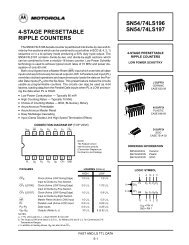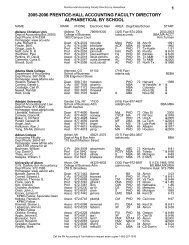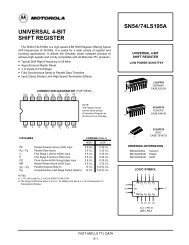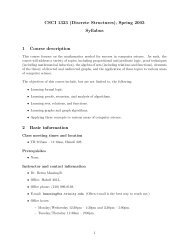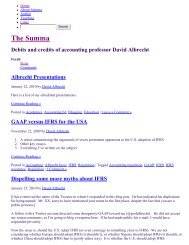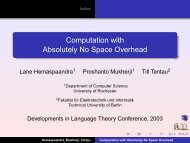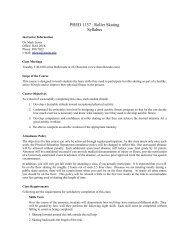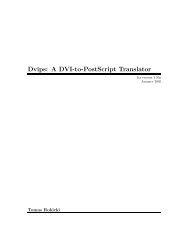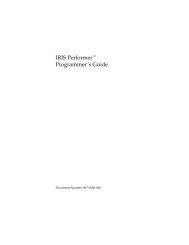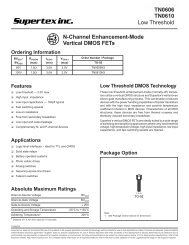A formal description of SYSTEM/360
A formal description of SYSTEM/360
A formal description of SYSTEM/360
- No tags were found...
You also want an ePaper? Increase the reach of your titles
YUMPU automatically turns print PDFs into web optimized ePapers that Google loves.
one device and the initiation <strong>of</strong> a new sequence, the channel willservice requests from devices that have outstanding status informationto transmit.A selector channel always works in the “burst” mode, and thecharacteristic operation <strong>of</strong> a multiplexor channel is the “nmltiplex”mode. However, a multiplexor channel is said to operatein the burst mode if a particular device monopolizes its facilitiesfor more than approxinmtely 100 lnicroseconds. This does notimply a difference in channel operation, but relates only to thequestion <strong>of</strong> availability, since efficient operation requires that theCPU be able to distinguish between a current operation thatis likely to keep the channel busy for a relatively long time andone that will soon be over. In term <strong>of</strong> the variables used here,it is a question <strong>of</strong> how long B: remains equal to I.The interface between a channel and its attached control unitsor devices is represented by thc variables U arid P‘. The suffix09/ U is a 1)us that carries a byte <strong>of</strong> infornlatiorl (ox/Bc) and abit ( e) for odd parity. The prefix ax/ U comprises three tagbits which specify the type <strong>of</strong> information on the bus. When theinterplay bit Ui = 1, information on the bus is outgoing (fromchannel to control units) and thc tags are, in order, command-outservice-out, and address-out; when = 0, information is ingoingand the tags are status-in, seruice-i’n, and address-in. In operationonly one tag may be set at a time, and its significance depends,in part, on the state <strong>of</strong> the channel. The remaining elelnents <strong>of</strong> Uare concerned with establishing and holding a logical connectionbetween the channel and a particular control unit. They aresuppress-out ( U:) and operational-out (e,) which are set onlyby the channel, and operational-in (&), which is set only by thecontrol unit. The polling line P is a vector that has a positionfor each control unit on the interface, in the order in which theyare connected. Pi is called select-out and Pwc, where w, has a valueequal to the number <strong>of</strong> control units connected, is called select-in.’Control units may be physically separate from or integralwith their associated devices; a multiplicity <strong>of</strong> similar devicesmay be connected to a single control unit or, conversely, a devicemay communicate with more than one control unit. Although thepresent <strong>formal</strong> <strong>description</strong> does not include details <strong>of</strong> this side<strong>of</strong> the interface, it will sometimes be necessary to refer to it inthe text. The term “device” will usually be used when speaking<strong>of</strong> specific tasks that devices perform once an active connectionhas been established between device and channel, and “controlunit” will usually be used when emphasis is on the establishment<strong>of</strong> such a connection.The fornml <strong>description</strong> shows the generation and processing<strong>of</strong> all results <strong>of</strong> channel operation to which a programmer hasaccess, including the data transferred to or from memory, a conditioncode setting (p,,,,,7) for 1/0 operations, an interruptioncode setting (p,18(,6,), and a channel status word (CSW) whichcomprises CAW“, a device status byte a*//, a channel status




